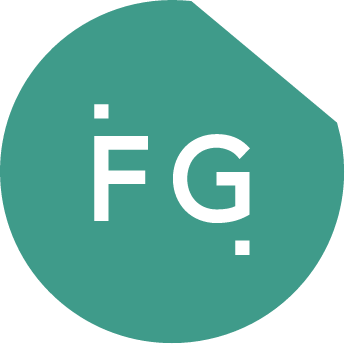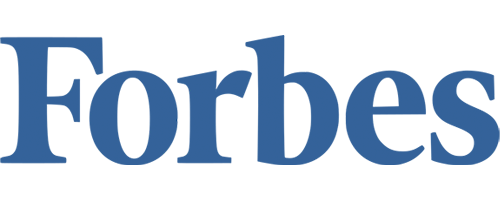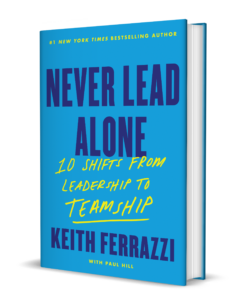“We weren’t even making hand sanitizers in the U.S. in early 2020. Leveraging our Suave brand, we went from idea to market in 6 weeks in 7 formats – amazingly we were out of stock in less than 1 day. While that is typically unheard of, our consumers are looking for us to respond to their needs as quick as possible, so we need to move fast and work differently.
That’s radical adaptability in the face of a COVID-disrupted economy. The speaker is Michael Clementi, an Executive Vice President of HR at Unilever responsible for its global markets and customer development teams based in North America. I’m hearing more stories like his recently: Organizations that used this crisis moment to transform how they work. There are plenty of challenges but more often than not people are discovering they had the ability to achieve better collaboration, more accountability, creativity, and growth.
——
The Go Forward Action Plan
Here are the steps Unilever uses to deliver value faster through agile ways of working:
- Step One – Ruthlessly prioritize projects based on which matter most to the customer and deal with them one at a time. Re-prioritize every month/two weeks or more frequently as needed.
- Step Two – Have a team prepare a detailed brief on each project. Everyone has to read it and get aligned around who’s doing what and when.
- Step Three – Start working. De-emphasize process and focus on delivering value. Put agile practices in place like daily standups, asking 3 simple questions from each member 1) what did I do yesterday; 2) what am I working on today; 3) where do I need help? The purpose is to update on progress, assign tasks, and identify roadblocks and owners.
- Step Four – Share demos of the early work with key stakeholders to get early input
- Step Five – Conduct a retrospective for learnings and fast fails – move to the next sprint and repeat
——
The story about getting hand-sanitizer to the market faster than Unilever thought possible came out of a conversation about the company’s broader shift to agile, a working discipline developed by software programmers where you iterate quickly and communicate and solve roadblocks continuously with the goal of getting value to the customer faster. You make mistakes and challenge established rules and norms, but you course-correct often. Accountability is forefront. Because agile methods have delivered so much value to the software industry, they’re spreading rapidly into all kinds of functions and companies.
Unilever’s work toward becoming an end-to-end agile organization, a program that begun a few years ago, made for excellent timing because the world just made agile a requirement. The two things successful remote teams demand are frequent communication and accountability. Agile also emphasizes breakthrough thinking, almost as if it was built for the new normal, working in and coming out of COVID.
“In some ways, I think that agile could have started first in consumer products, where it’s our mission to see changing consumer behaviors and deliver products and services people need in as close to real-time as possible,” says Clementi. “Consumer behaviors change, particularly now, as we have all got used to experimenting with everything from new product variants to new channels of purchasing. So if you’re working on longer cycle times you’re goin
g to miss trends and growth opportunities. We have to capture insight fast and deliver value quickly – responsiveness is what many of us have become accustomed to. Faster time to market leads to increased trials and hopefully higher brand loyalty. When speed is the currency, you create a culture of experimenting, risk-taking, learning, and improved cycle times, not to mention better team accountability and engagement. In fact, Unilever employee surveys show agile teams are 8% more positive that they are working efficiently and the company has helped remove barriers between teams.
While Unilever’s ambition is to become an agile organization, it knows it has a ways to go. “We are constantly experimenting and learning and by no means are we where we want to be, but we see enough positive signs to keep going.” To become an agile organization, learning and fast fails are part of the process. The UK team cut more than 320 weeks of development from its standard project timelines. For example, agile helped cut the development time for an important UK TV sponsorship campaign from 6 months (2018) to 10 weeks (2019). As far as business impact, Lynx (Axe) deodorant was the first brand to work in agile methodology late 2018. By mid-2019, it had turned performance around, delivering market share growth and top and bottom line growth.
We’ve all spent enough time away from the office to realize how much time we wasted in the office. “You know what I’m talking about,” says Clementi. “Most of us are juggling several projects at the same time, which slows down our personal and collective output.” Agile is not complicated, but it is a different way of working that ensures that teams are focused on customers and on value.
“What’s great about agile,” says Clementi, “is you’re working on one project, the most important, highest value project, and teams are unified around the top priorities. There is no need for long, drawn-out conference calls or meetings. Work becomes about collaboration and output, if you have questions on a squad call, you can type it into chat or build upon each others’ ideas in the on-line tools.
Unilever started with a series of pilots in the summer of 2018 and saw enough success to expand out to ~20 projects in mid-2019, starting with the UK and Dutch marketing teams, in the hair business and in support functions like HR in North America. And while they were working on training and how to scale globally, it really took off in when the pandemic hit. When everyone’s remote, the need for even more accountability goes way up.
“There’s nothing like agile to drive accountability. When you are working in agile squads, you have daily standups, kanbans, and several other simple tools that keep pace and let everyone know what is happening on the project,” says Clementi. On Unilever’s bigger projects they use a “scrum master” whose role is to go around the horn and work down an online to-do list (kanban in agile terms) and move each task along just as someone would move Stickie notes on a whiteboard in the office.
“In our business, it’s amazing what happens when you put responsibility for innovation in the hands of those closest to the customers,” says Clementi. “Because they have focus and accountability, they can pressure-cook something that used to take weeks and do it in a few days.”
“We’re not going back to the way things were,” says Clementi. “Traditional agile methods would recommend that we all need to be in the same place to maximize the benefits, but we have all the online tools we need — chat, video, kanban boards, on-line retros, and in many cases, they are integrated into the one technology. Most of us are practicing agile behaviors now, whether we know it or not, which is why work is getting done while so many of us are at home and as individuals, we are seeing the benefits. At Unilever, we believe now is the time to ensure we embed these new ways of working at scale. We have a long way to go, but we can see how agile fits perfectly into the future of work.
Three Practices Of Great Agile Organizations
By now, Clementi has a pretty clear idea of what it takes to run an agile organization well.
The first, he says, is to emphasize consumer value, not process. Case in point: The world needs hand sanitizer.
The second is emphasizing prioritization like crazy. Most companies (and people) struggle with prioritizing and focusing on what matters most. Being able to find ways to get alignment on value, defined by the consumer or end-user is critical to prioritizing well. At Unilever, squads break work into sprints and have regular ‘prio’ meetings’ to agree on priorities and to plan resources against the highest value, most urgent task.
Mike explains that you can do these every two weeks, once a month or every other month, but when you prioritize outcomes or are in a crisis like we are all in now, daily may be the way to go. There are some simple tools to get started, like a prioritization matrix. This helps teams size the task around value and effort – a simple 3×3 works well.
Great agile teams also know that project briefs are what ensures alignment and speed. These are one-page templates created by an initiative owner that covers outcomes, milestones, resources needed, and impediments. Once the brief is written, you begin on ‘sprint zero’ where the team works to agree on the brief, challenging all assumptions and get clear on exactly what is to be delivered by when. Once they are clear and the brief is agreed, typically, the squad starts their first sprint.
“What matters most is delivering on the consumer need,” he says. “There’s a huge difference in value creation when you shift from thinking about delivering the perfect product to the minimum viable product. Let’s focus on producing the best product we can within the timeframe or (time box), learn from consumers and customers, re-iterate and improve.”






